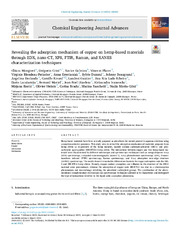| dc.creator | Mongioví, Chiara | |
| dc.creator | Crini, Grégorio | |
| dc.creator | Gabrion, Xavier | |
| dc.creator | Placet, Vincent | |
| dc.creator | Blondeau-Patissier, Virginie | |
| dc.creator | Krystianiak, Anna | |
| dc.creator | Durand, Sylvie | |
| dc.creator | Beaugrand, Johnny | |
| dc.creator | Dorlando, Angelina | |
| dc.creator | Rivard, Camille | |
| dc.creator | Gautier, Landrot | |
| dc.creator | Ribeiro, Ana Rita Lado | |
| dc.creator | Lacalamita, Dario | |
| dc.creator | Martel, Bernard | |
| dc.creator | Staelens, Jean-Noël | |
| dc.creator | Ivanovska, Aleksandra | |
| dc.creator | Kostić, Mirjana | |
| dc.creator | Heintz, Olivier | |
| dc.creator | Bradu, Corina | |
| dc.creator | Raschetti, Marina | |
| dc.creator | Morin-Crini, Nadia | |
| dc.date.accessioned | 2023-03-06T08:26:28Z | |
| dc.date.available | 2023-03-06T08:26:28Z | |
| dc.date.issued | 2022 | |
| dc.identifier.issn | 2666-8211 | |
| dc.identifier.uri | http://TechnoRep.tmf.bg.ac.rs/handle/123456789/5970 | |
| dc.description.abstract | Hemp-based materials have been recently proposed as adsorbents for metals present in aqueous solutions using adsorption-oriented processes. This study aims to reveal the adsorption mechanism of materials prepared from hemp shives as co-products of the hemp industry, namely sodium carbonate-activated (SHI-C) and polycarboxylic agent-grafted (SHI-BTCA) hemp shives. The interactions between copper and two hemp-based materials were characterized by different microscopic and spectroscopic techniques such as energy-disperse X-ray (EDX) spectroscopy, computed nano-tomography (nano-CT), X-ray photoelectron spectroscopy (XPS), Fourier-transform infrared (FTIR) spectroscopy, Raman spectroscopy, and X-ray absorption near-edge structure (XANES) spectroscopy. The results showed remarkable different mechanisms for copper adsorption onto the SHI-C and SHI-BTCA hemp shives. Namely, copper surface adsorption and diffusion in the structure of the SHI-C material were predominant, whereas the adsorption of copper onto SHI-BTCA was due to a chemisorption phenomenon and ion-exchange involving the adsorbent carboxylate groups. The combination of the abovementioned complementary microscopic and spectroscopic techniques allowed us to characterize and distinguish the type of interactions involved in the liquid-solid adsorption phenomena. | sr |
| dc.language.iso | en | sr |
| dc.publisher | Elsevier B.V. | sr |
| dc.rights | openAccess | sr |
| dc.rights.uri | https://creativecommons.org/licenses/by-nc-nd/4.0/ | |
| dc.source | Chemical Engineering Journal Advances | sr |
| dc.subject | Adsorption | sr |
| dc.subject | Copper | sr |
| dc.subject | Hemp shives | sr |
| dc.subject | Mechanism | sr |
| dc.title | Revealing the adsorption mechanism of copper on hemp-based materials through EDX, nano-CT, XPS, FTIR, Raman, and XANES characterization techniques | sr |
| dc.type | article | sr |
| dc.rights.license | BY-NC-ND | sr |
| dc.citation.spage | 100282 | |
| dc.citation.volume | 10 | |
| dc.identifier.doi | 10.1016/j.ceja.2022.100282 | |
| dc.identifier.fulltext | http://TechnoRep.tmf.bg.ac.rs/bitstream/id/15850/Revealing_the_adsorption_pub_2022.pdf | |
| dc.identifier.scopus | 2-s2.0-85126076032 | |
| dc.type.version | publishedVersion | sr |

